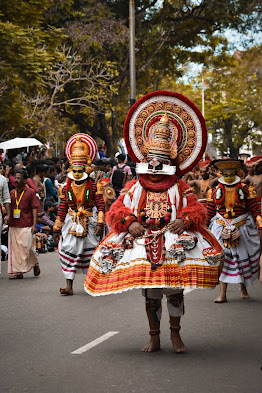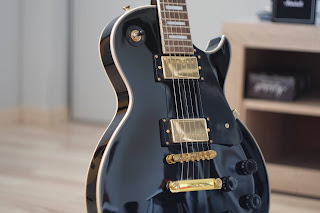Today I will discuss with you some Indian musical instruments and how important those instruments are. Please read fully without skipping.
Importance of
Indian Musical Instruments
Indian musical instruments played an important role in the Indian Society as the music for the Indian dance dramas or instrumental music was played with these instruments. A good knowledge of Indian Musical Instruments will enhance the understanding of the Indian culture. The name of the instrument says it all. Sitar is a 12-stringed guitar-like stringed instrument, played in the Indian classical music. It is traditionally played in a barati style of playing in which the fingerboard is used as a fret board. The piece of wood from which the instrument is built is called surmai, and it is the lightest musical instrument. Vocal music in India always used Sitar as a solo instrument with inaudible sound effects.
The Top 7 Indian
Musical Instruments
There are around 150 different types of musical instruments used all over India. Only those instruments are described in this post. There are many types of music playing instruments in India. What we are going to discuss are the basic, essential and authentic musical instruments. 1) Kapila (used in Kirtan Sangeet). Kapila is a type of mandolin. Kapila kouta (a type of button) is also known as 'tambura'. The original Kapila has no strings. It is played with hands. Sometimes the hand sound can be achieved with the kafan. The Kapila has a tiny body and no neck. The strings are attached at the end of the body. It has two buttons on the sides that give two different tones. 2) Tabla (used in bhajan and kirtan music) Tabla comes from a word that means "from the earth".
Sitar
Sitar, literally means 'stringed instrument' and that is correct. Sitar is a stringed instrument played like an accompaniment of classical Indian music. It is commonly made in the shape of a sitar and comes in all forms. These days many folk instruments are played on this instrument. Sitar can be played with bow or without bow, and if the player doesn't use it correctly can cause much discomfort and pain to the instrument. I am sure you must have heard many songs, in which sitar is used along with the dancer. Pandavani Pandavani is a Hindi-language music genre, originally a folk tradition, which has become an integral part of Bollywood. It is a narrative song, often performed in a drama, film, or theatre.
Sarangi
Sarangi, one of the oldest stringed musical instruments was in vogue in ancient India and is still in practice today in the remote villages of the country. Reverberation is produced from stringed string instrument like the sarangi. The player, which used to be female for long time used to play it on her thighs and legs and near her ear. The primary pitch of the instrument is D. The sarangi is played at least six-seven meters away from the player so that the right vibrations can be heard and ideally, the sound should be audible from the stage. Instruments like sitar and sarangi need a lot of practice to become good in playing. As a result, both instruments are mostly played in rural areas.
Bansuri
Bansuri, or ਬਸਾਦੀ (diz-suh), is the name of a bamboo zither, a small lute, sometimes with some frets, consisting of three wooden pieces or limbs joined together by string. This musical instrument is made from an aji tree, and the name, "bansuri," is derived from "marsi," meaning "the fingers" in Hindi. The instrument is very common in India, and is known in the states of Rajasthan, Punjab and the North-West region of India. One of the most famous bansuri players is Avadhi Malik who won several national and international awards for the instrument. Dholak Dholak is a cylindrical drum made from made of goat skin or bull hide, with wooden sticks, which is a common instrument in India. Dholak is one of the most popular drums used for playing Indian folk music.
Veena
Veena is one of the oldest musical instruments made by the Hindus. This instrument has a long history dating back to 1500 years ago, when the name Veena is mentioned in the Ramayana by poet Bhaskara Rishi. Here is the famous verse by him: "Both Veena and Tabla are the means to divine knowledge." It means that both are like a book which can teach you any thing. Lute Here is another musical instrument that is even more ancient than Veena and its name is also Veena like name. This instrument has long history and it is said to have been invented in 2,600 years ago. Lute is a big, versatile and a melodic stringed instrument that is used to play musical rhythms. Lute is also known as "Guitar of the East".
Flute
Flutes are hand-made from wood that is obtained from trees like Cretaceous Trees, Axolotl, Alapallone and etc. Flutes come in different types like Trumpet Flutes, Tabla Flutes, Muskan Flutes etc. The musical instrument are used for classical Indian Music, Kajari Music, Indian Folk Music, etc. But the most important instrument used in Indian classical music is Flute. Flute was invented and produced in India during 5th and 6th century BC by people like Bharat Bhagavat Kavitayen, Gulistan and Mahesh Dayal etc. Today flute, it’s played in different types of Indian Classical Music which is based on ragas. Trumpet The trumpet was invented and produced in India by people like Raja Bhim Rao of Kolhapur.
Tabla
The tabla is the most important Indian musical instrument, as it is the only one that is indigenous. The tabla comes in various sizes and has various sounds. It is played with a stick and two metal bowls that make sounds when struck with the stick. It is played with right and left hands and when one hand is on the "right" side and the other on the "left" side. The instrument was originally made for royalty, since the players were trained in court of the king. Vocal Music Traditionally, Indian music is vocal, but since India has the tradition of conduction from a guitar (violin) to voice, vocal music has always been important. Different types of music of India such as western classical music, devotional music, and traditional music.
Harmonium
Harmoniums are a type of woodwinds. For decades, they were one of the preferred instruments of orchestral musicians. They are quite similar to the western flute and are famous for their sound and timbre. Harmonium is an ancient instrument and was played in ancient Greece by men. Later, a Chinese monk brought a harmonium to Tibet, where it was very popular. But by the 18th century, Harmoniums lost popularity in India. They were phased out by the arrival of a European instrument called the Soprano Piccolo. Basilica Annunziata Sacred harp is an acoustic stringed instrument. This unique and ancient instrument originated in Egypt and later spread to Palestine, Syria, the Arabian peninsula, India and the southern peninsula of Africa.
Conclusion
Following are the 7 Indian musical instruments you probably didn’t know. I’ll try to point out why they are important to the music. You’ll probably wonder what all these instruments are and why they matter to the music. Keep reading. 1. Mantra Kalasha Now most of you must know what a Mandolin is. If you don’t what it is, then let’s go ahead and look at what it is not. A Mandolin is a stringed instrument that has seven strings or stringsets and is most commonly used in world music. The fretboard is usually straight and usually is a flat face. The strings have joints that create octaves. They sound when the string is plucked or pressed with a finger. The Mandolin has a regular jute covered wooden body and it is usually made of rosewood.

















